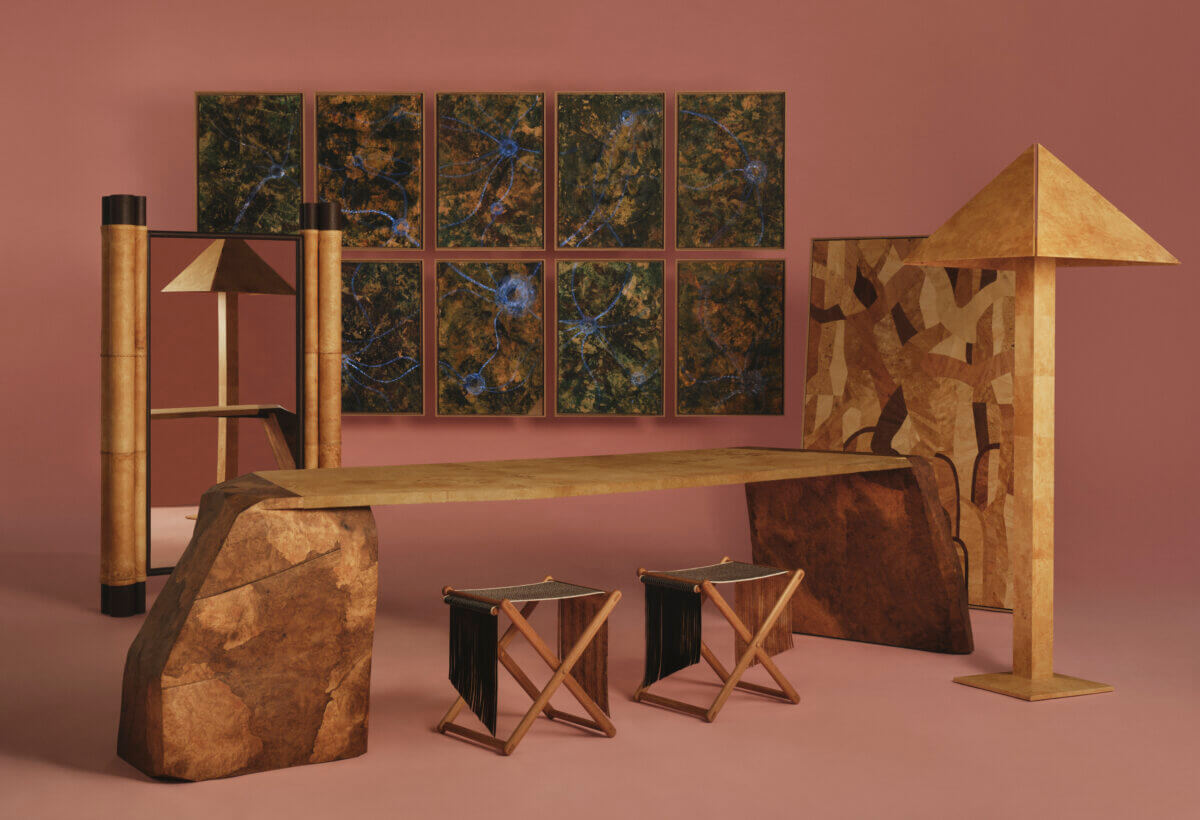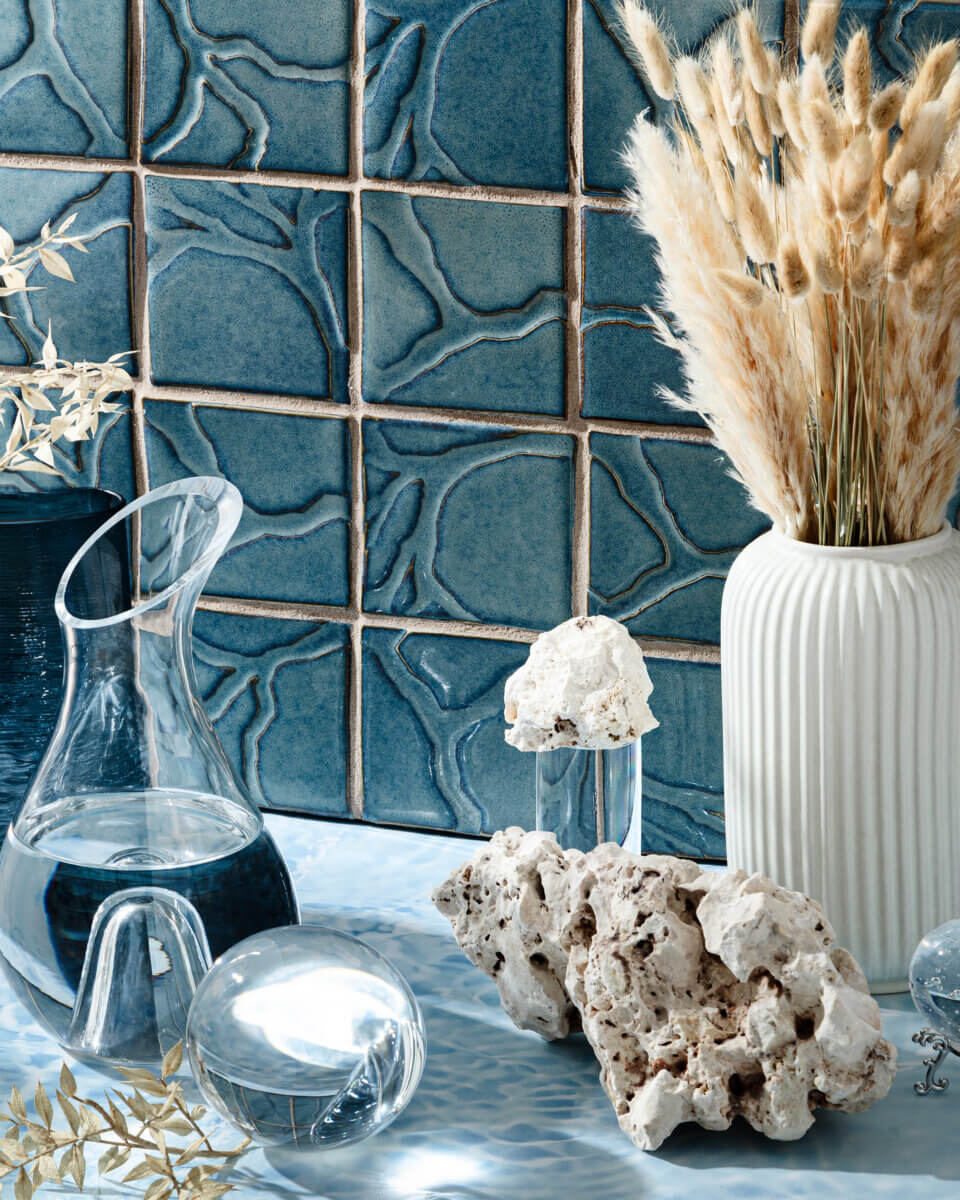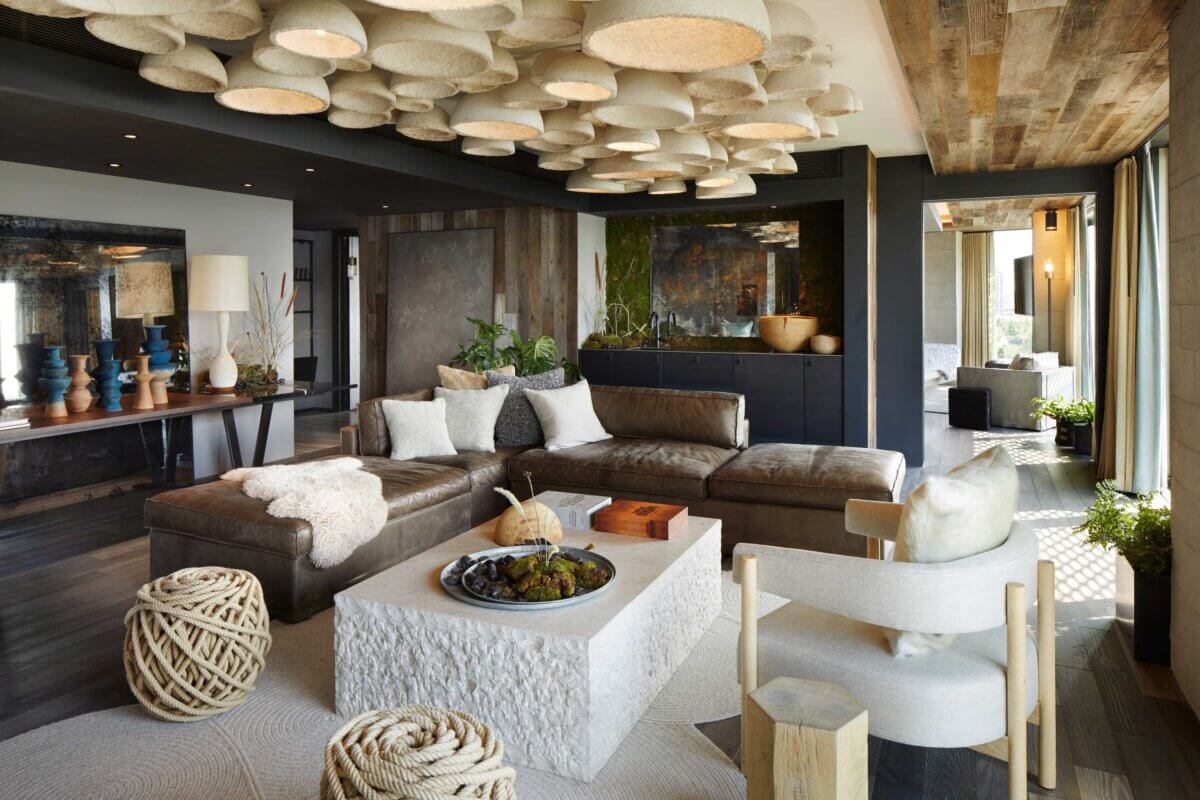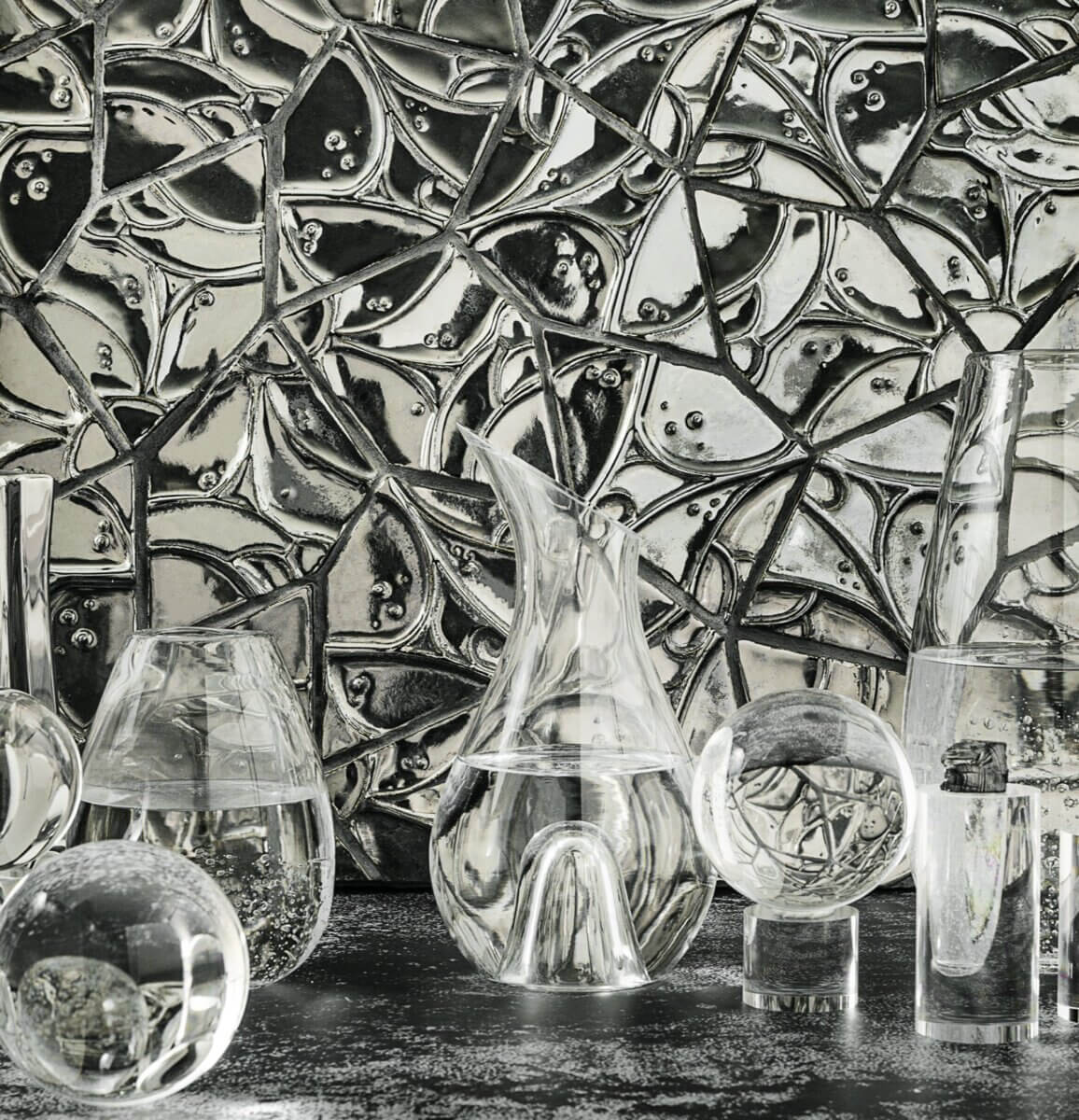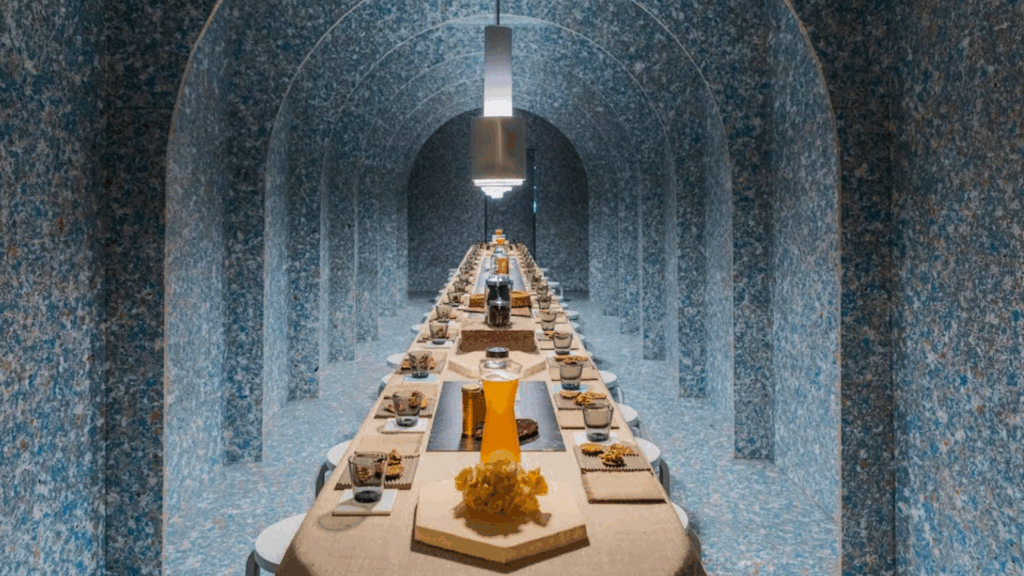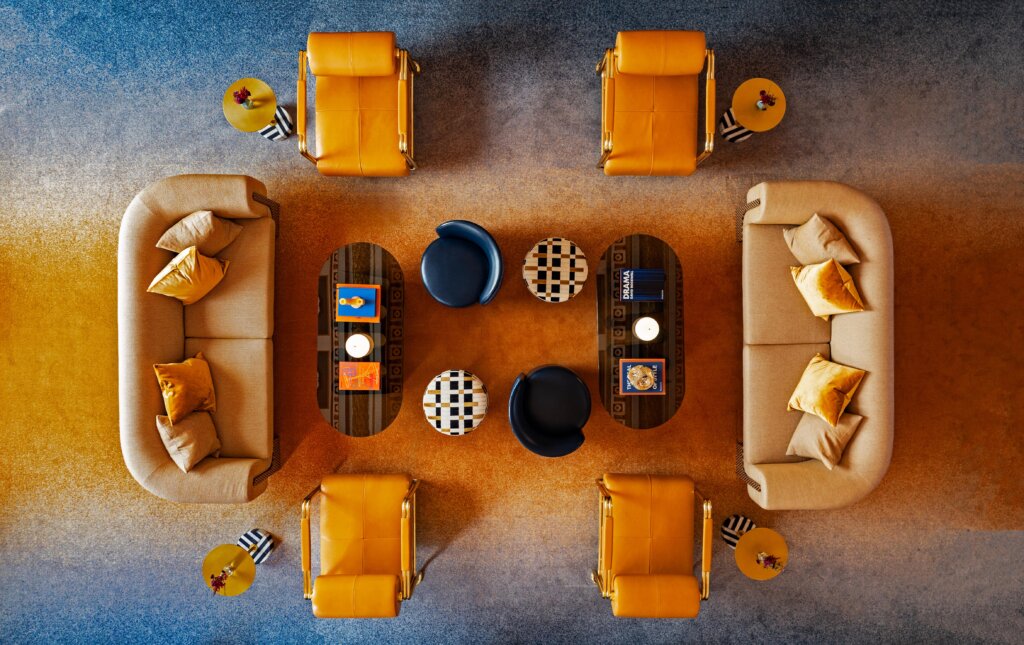
It’s hard to deny that the term sustainability has gone out of fashion in recent years. However, the repercussions of overlooking this essential condition of production and consumption—in numerous sectors—is undeniably perilous. The severe impacts of mass extraction, environmental degradation, and pollution, in general, are as pressing as ever, if not more so than in the past. There is perhaps no field better poised to tackle these seemingly insurmountable “wicked problems” than design: the furnishings, finishes, and objects that implicitly define our everyday lives but that can sometimes fade into the background of what we deem to be most urgent in the moment. They can also become overly lauded—often superfluously ornate—demarcations of fleeting status and because of that, are then easily discarded after a short period of time.
Unfortunately, like many facets of culture and media, the notion of sustainability has been disingenuously co-opted by commerce as used as a marketing ploy; what is now commonly known as greenwashing. Brands will claim to have fully met projected standards as a means of drumming up sales but in fact, have only done so partially; concealing one or more aspects of the lifecycle of their products, for example. The reality is that the rampant forward march of industrialization, the disjointment of manufacturing and the advent of the assembly line—now very much a globalized phenomenon in which different components of a product are manufactured in different parts of the world—has made it near impossible to maintain full control over every aspect of the process.
That said, an increasing number of boutique brands—many of which showcase at ICFF—have taken back the reins of this otherwise intractable system. Ahead of the 2025 edition of the fair, three exhibitors leading the charge in this respect—MushLume Lighting founder Danielle Trofe, MycoWorks VP of Sales Fred Martel, and Star Tile co-founders Andrea Keller and Mikayla Mitchell—have shared their insights on where things stand and what effective strategies they’re implementing.
What’s the state of sustainable design in 2025?
Fred Martel: The landscape of sustainable design is at a critical turning point. Customers and brands alike are demanding more than just promises—they want real, scalable solutions that deliver both environmental responsibility and uncompromising performance.
Andrea Keller: There are some real advances in healthy construction and design: mineral paints; bio materials; alternatives to drywall; rising popularity of earth construction methods. All are very exciting and a long time coming. There are also incredible technologies for fabricating parametric and biomimetic shapes, such as 3d printing, CNC milling, laser cutting, robotic construction, and more.
Danielle Trofe: We’ve seen a remarkable upswing of both trade and consumers making a greater effort to support sustainable design. Businesses and individuals are putting their purchasing power toward backing eco-conscious products and brands that they believe align with their project, company and personal ethos.
“Greenwashing,” that dilutes the category and confuses the consumer, will unfortunately continue to be on the horizon as popularity rises and money flows towards prioritizing environmentally friendly and ethically sourced products.
Authentic brands whose products’ lifecycle analysis do meet the mark of sustainability, will bear the onus of having to provide even greater transparency. It has become paramount to disclose what goes into a product, how that material will impact human health and how much finite resources are used during the manufacturing process. Not to mention, the need to provide information about how to safely discard, recycle, reuse or biodegrade your product at the end of its life.
Oftentimes the most difficult challenge for sustainable businesses is to make these qualifying metrics tangible and relatable to both industry and individuals alike. Sustainable brands are not only tasked with upholding the highest product standards in the industry, but they are also required to educate their audience about why their material or process matters and its environmental impact compared to their direct competitors.
Why has the term and concept become so unpopular in recent years?
Mikayla Mitchell: While industry has been working on this important shift towards holistic health for years, the public is still hesitant to jump in and pay for these often more expensive solutions. This is because our overall metric for design is still the cost per square foot rather than cost per square foot per year. The true early adopters are often people who need to make healthier material choices because other houses and buildings have made them sick. Because the greenwashing around building materials was so extreme and widespread , most of our clients simply returned to cheap and known methods of construction.
F.M.: The term “sustainable design” has faced growing skepticism in recent years, largely because many materials and solutions simply haven’t lived up to their promises. A significant part of the problem is that many so-called biomaterials on the market are not as sustainable as they claim. Most rely on petroleum-based plastics for performance, making them closer to bioplastics than true biomaterials. This gap between marketing and reality has eroded trust, as consumers and industries realize that many “eco-friendly” alternatives still carry a significant environmental burden—sometimes worse than traditional materials like leather.
Another challenge is that producing genuine biomaterials at scale is incredibly complex and resource-intensive. While many innovations look promising in a lab, very few can be industrialized without compromising quality, performance, or sustainability. It takes years of research, advanced technology, and significant investment to create materials that can deliver both on a technical and environmental level—and that’s where most solutions have fallen short.
D.T.: We, in the sustainability market, have actually been experiencing the opposite trend. Sustainable products are becoming more popular year after year. Just to give an example, the global sustainable furniture market is currently valued at around $50 billion dollars and is expected to more than double by 2033. Rising costs of virgin natural resources and transportation, as well as a cultural shift to prioritize recycled, regenerative and bio-based solutions have all helped to exponentially grow demand.
However, there are two major challenges that have risen surrounding sustainable design: firstly, the lack of a clear definition of what makes something “sustainable” or not, and secondly, the expectation of performance and permanence in comparison to existing products the sustainable counterpart aims to replace. We must realize that we are still in the early days of a material revolution; think of personal computer interfaces prior to Windows. Now that the initial demand has been proven, the investment and advancement of the production technologies and material sciences will follow, and not just linearly, but exponentially.
What new strategies have you devised that are set to change the game, so to speak; with the potential for real impact in the design domain and beyond?
D.T.: My aim as a designer and entrepreneur is to showcase that it is possible to achieve a new standard for sustainability. For me this means raising the bar and not settling for the “less bad” option, but only designing and making the options that are actually good, good for people and the planet. “Good” meaning that they do not poison our interior spaces, do not extract from nature more than it replenishes and has a closed loop end of life plan that utilizes and empowers the wellbeing for all those connected throughout the supply chain.
This is not easy and I’d say 98% of products across all industries do not achieve this level of sustainability. Currently, the most common litmus to make a declaration of being sustainable is to provide a product option that is “less bad” for the environment. For example a company might now use 10% recycled content in their product, use only recyclable packaging or exclude a known carcinogenic ingredient it once used. Yes it’s better, but it’s not good and definitely not good enough. This can often give a false sense of advancement, thwarting additional efforts to achieve 100% recycled content, use only local, ethical production and have all biodegradable and safe ingredient standards.
My hope is that by continuing to walk our walk, we can inspire other designers and brands and serve as a model for the industry. Demonstrating that a higher level of sustainability is not just aspirational, but is achievable without compromising a company’s bottom line, which is often linked to its profit margin. More companies must make this migration towards a more fundamental alignment with the planet. The only planet and home that provides the finite resources we depend on to make products, build businesses and survive on.
F.M.: At MycoWorks, our strategy has always been grounded in a commitment to quality and performance—without compromise. While many in the biomaterials space have prioritized speed to market, we took a different approach: investing the time and resources to perfect our Fine Mycelium technology. This dedication has allowed us to deliver Reishi and to achieve the standards of luxury design while being available at scale. Our solution is not just an alternative—it’s a new category of material. It stands on its own.
What sets us apart is that we didn’t stop at creating a sustainable material. We built a technology that empowers designers to imagine new possibilities. With Reishi, we’re not only offering a high-performing, natural material—we’re providing a platform for innovation. Designers now have the freedom to explore new applications and respond to the needs of a modern, conscious lifestyle. This ability to inspire new forms, new uses, and new ways of living is a profound shift in the design process.
Another key aspect of our strategy is scalability without sacrificing integrity. Bringing a truly natural material to industrial scale is no small feat, but we’ve achieved it. This means designers and brands no longer need to choose between quality and sustainability—they can have both. As the design industry looks for real, impactful solutions, Reishi stands out as a material that not only meets today’s demands but also opens the door to the future of sustainable design.
By focusing on quality, innovation, and scale, we’re not just responding to the current moment—we’re shaping what’s next. This long-term vision and our ability to deliver a real, natural solution is what makes us a driving force in the design industry and beyond.
A.K.: Most manufacturers are looking at only the physical materials or the color palette, but we realized that very few are tapping into the powerful effects of the subconscious mind. Health can and should happen on a wide range of levels. So, we devised products that are 100% natural, extremely long-lasting (think thousands of years), use only natural mineral pigments and activate relaxation deep within by using the principles of neurobiology. We have set out to create a range of products that offer next-generation wellness and can be incorporated into any interior or architectural project. Our products are also made by human hands, which is palpable.
Citing one or two examples of products or systems—perhaps those that you’re planning to showcase at ICFF this year—how has this strategy been implemented in your practice/ company?
M.M.: We at Star Tile offer multiple product designs that feature the use of biomimetic fractals, which have been proven to reduce stress / fight-or-flight response by 67%. Additionally, the intricate natural patterns enhance communication between the right and left brain, which aids in regulating our emotions—a truly powerful aspect to bring to interior design. We are debuting several fractal patterns at ICFF this year in the Bespoke section including the Branching, Erosion, and Morph series.
D.T.: For the past 11 years, MushLume Lighting has been bio-fabricating lampshades using mycelium, the roots of mushrooms. Biofabrication is the process of growing a product using a living organism. We grow our lampshades using mycelium that is grown in a lab and regenerative farm, not extracted from nature and is then combined with locally-sourced hemp. We use the part of the hemp plant that is a byproduct of the fiber industry. Hemp requires significantly less land and water to grow compared to other natural fiber plants and sequesters carbon dioxide into the soil. In the past 3 years alone, we’ve grown enough lampshades to amount to 5-8 tons of carbon dioxide that’s been sequestered into the soil, plant, and ultimately the lampshade.
Rather than taking months to years to reach maturation, the mycelium grows in seven to ten days, cultivating a thick network of hyphae that binds to the hemp substrate, solidifying into a solid structure within the custom lampshade molds. During the growth phase no additional water or electrical energy is needed, the lampshades are grown using only the power of Nature! After the mycelium has fully matured, the lampshade is demolded, dried and heated at a very low temperature, creating a stable, inert and 100% biodegradable lampshade. Rated home-compostable at the end of its life, the lampshade can safely biodegrade in your backyard compost, adding nutrients to the soil rather than pollutants.
This year MushLume Lighting will be returning to ICFF and the Wanted Look Book section to feature a new collection of ceiling and wall elements designed to naturally dampen sound while providing illumination. Our new acoustic lighting solutions can be configured and layered within a space to increase acoustic performance and have the option to be illuminated with light or left unlit. The collection is called In Stillness and is grown using mycelium and hemp, providing a more sustainable advancement in the lighting and interior acoustic solutions categories.
F.M.: At ICFF this year, MycoWorks is excited to showcase pieces from the Mycelium Muse collection, which exemplify our strategy of combining cutting-edge biotechnology with exceptional design and creative exploration. This collection highlights the versatility of Reishi through a range of design objects that not only demonstrate its new aesthetic for interiors and high-performance capabilities but also reveal its potential to inspire new forms of creative expression. In addition to the Mycelium Muse collection, we will present new works from visionary designers, further emphasizing how Reishi fuels creativity and encourages new design possibilities.
We are also proud to unveil a new set of SKUs called “Club,” which highlights the unique quality of mycelium and brings to Reishi a distinctive character that sets it apart from traditional leather—both in its touch and aesthetic appeal. This new texture celebrates the organic essence of mycelium while offering a fresh, contemporary expression for designers seeking materials that break away from conventional surfaces.
To see these brands and many more, be sure to register for ICFF 2025, May 18-20. Register here >>>
More from ICFF:
Designer Profile: Rudy Guénaire
Creatives Wanted (Overseas)
Spotlight: Lixil’s Water Experience Center
